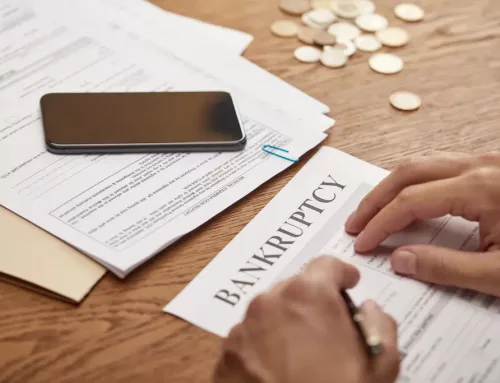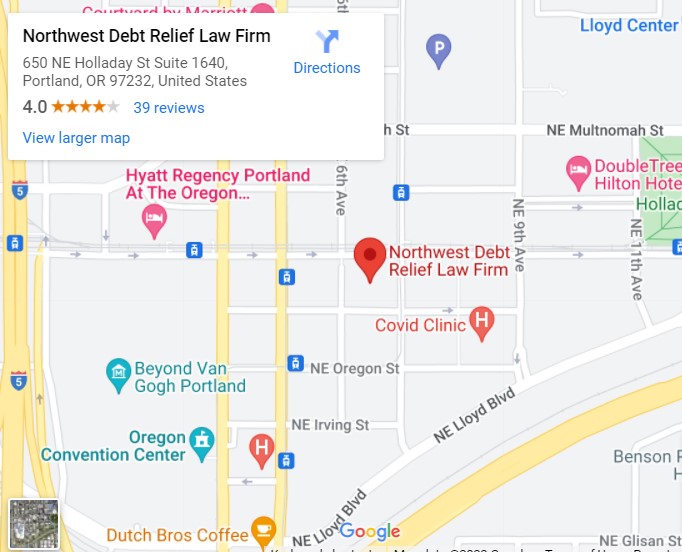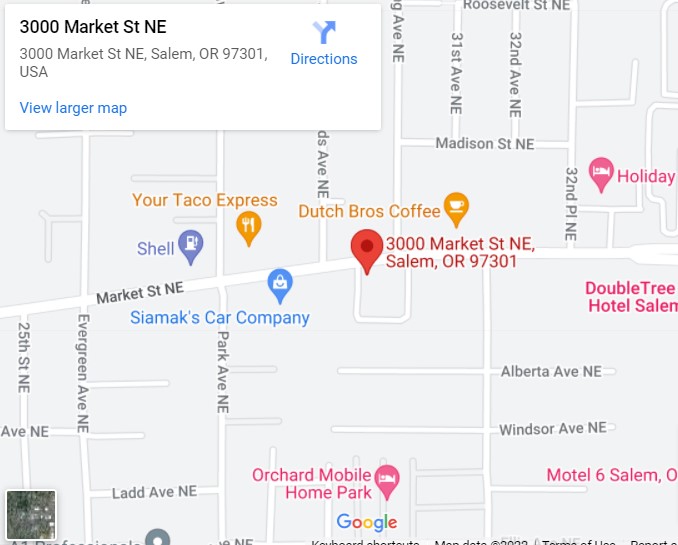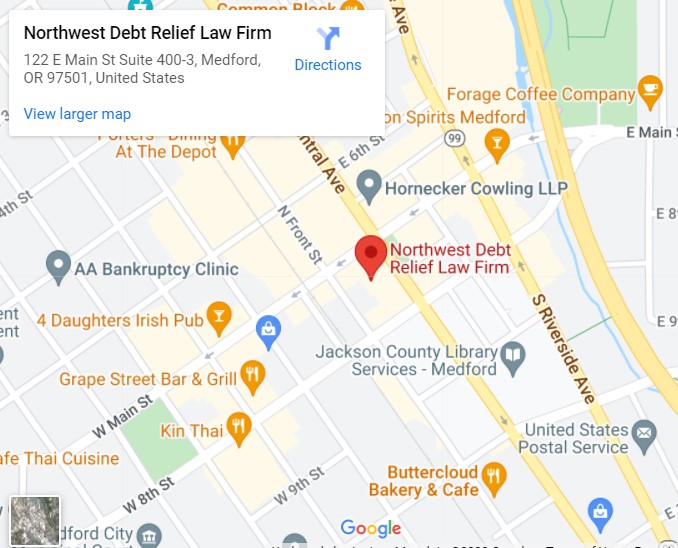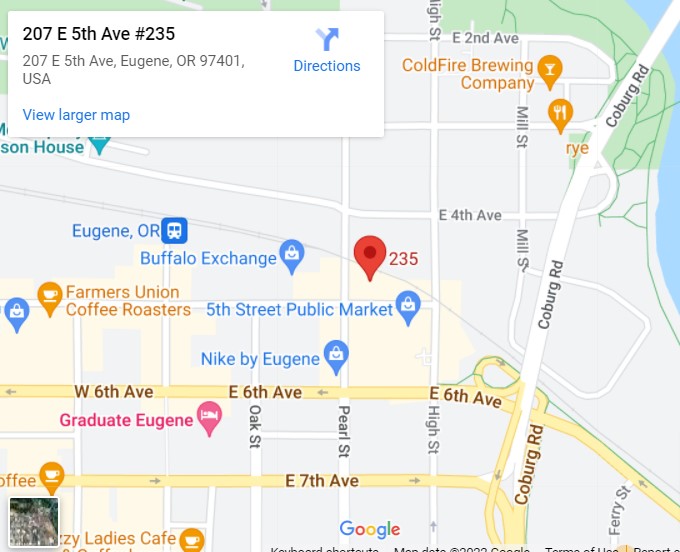Losing the Automatic Stay: A Quick Summary
Filing for bankruptcy may be the solution when you want creditors to stop hounding you. The automatic stay stops any collection efforts, including but not limited to foreclosures, harassing phone calls, and lawsuits. However, repeated filings over the course of a year raise red flags that the bankruptcy system is being manipulated. If this is your second time or third time filing bankruptcy this year, you will need to show good faith in your bankruptcy petition if you want the automatic stay to stand.
To get more information regarding automatic stay, get in touch now with an experienced bankruptcy attorney at Northwest Debt Relief Law Firm from Oregon (Portland, Salem, Medford) and Washington (Vancouver, Seattle, Tacoma).
What is an “Automatic Stay”?
 U.S. bankruptcy law includes a provision known as the “automatic stay” injunction that goes into effect once a bankruptcy petition is filed.
U.S. bankruptcy law includes a provision known as the “automatic stay” injunction that goes into effect once a bankruptcy petition is filed.
While bankruptcy may or may not be the best option for everyone with overwhelming debt, it can provide some relief that’s comparable to when the cavalry finally shows up. Hostile letters, harassing phone calls, and lawsuit threats are all temporarily stopped by the automatic stay. Additionally, it makes debt collectors who are in the know accountable for any violations of the injunction they may cause.
The automatic stay provision of U.S. bankruptcy law temporarily prohibits creditors, collection agencies, government bodies, and others from taking any further action against a debtor in Oregon and Washington for money owed.
The debt-relief provided by automatic stays is not a one-size-fits-all solution. They have their limits. A debtor from Oregon and Washington facing foreclosure or income garnishment may view this as a welcome reprieve, even though it doesn’t technically qualify as debt forgiveness. so they can sort out their financial affairs before the creditors try to collect a debt.
How Does Automatic Stay Work?
It isn’t called “automatic” for nothing. According to Section 362 of the United States Bankruptcy Code, the automatic stay enters into force immediately after an individual or business files for bankruptcy. Automatic stays are available in Chapter 7 and Chapter 13 bankruptcies, which together account for 99.9% of common bankruptcies filed.
An automatic stay can be good for both the creditors and the people who owe money in Oregon and Washington. How so? To put it another way, it levels the playing field for all creditors. When an automatic stay is in effect, no creditor can pursue debt collection at the expense of other creditors.
To ensure that all of your creditors are aware that a bankruptcy filing has been made (and an automatic stay is in force), you must include all of your creditors in your bankruptcy application. It’s a good idea to keep a record of the bankruptcy case number in case any of your creditors don’t receive the notice that you’ve filed for bankruptcy and they keep attempting to get in touch with you.
Automatic stays don’t last forever. However, while the bankruptcy case is ongoing, the debtor is shielded from any additional legal proceedings, foreclosure, lien claims, or repossession attempts.
Previous Bankruptcy Cases Have an Effect on the Automatic Stay
The length of the automatic stay, or if it happens at all, depends on how many times a debtor has filed in the past year.
Automatic Stay for 30 days. The automatic stay will last for 30 days if this is the debtor’s second bankruptcy filing in the last year.
No Automatic Stay. The automatic stay will be issued by the bankruptcy court if the debtor has filed two or more cases in the past year.
However, the debtor can petition the bankruptcy court for an extension of the stay beyond the initial 30 days. If the motion is granted, it will show that the debtor isn’t trying to manipulate the bankruptcy system.
How to Get an Extension of the Automatic Stay Period
You must complete the following before the court will issue an extension of the automatic stay:
- Get a motion ready that explains why your bankruptcy filing isn’t done in bad faith and why it should be allowed.
- You should schedule the hearing on the motion not more than 30 days from the day you filed for bankruptcy.
- You must serve your motion on the creditors, the trustee, and the U.S. Trustee in a timely manner.
If you find yourself in a bind and unable to give the required period of notice, your bankruptcy attorney in Oregon and Washington may be able to secure an “Order Shortening Time” on your behalf.
How to Prepare an Automatic Stay Request
The bankruptcy court in Oregon and Washington will presumptively rule that the bankruptcy petition was filed in bad faith when considering whether to grant or extend the stay. You need to show the judge that the case was thrown out for no fault of your own.
For instance, the bankruptcy trustee may have discovered that the name on your petition differed from the name on your official identification, and the bankruptcy court may have dismissed your petition because you did not immediately file an amendment. You would have probably won the motion if you updated your personal information, but your bankruptcy lawyer forgot to file it. It was not your fault that things went wrong. But if you failed to make the update while acting as your own attorney, the judge may question your reasons and wonder if identity theft was involved. You will be unable to meet the good-faith criteria.
If you were dismissed due to circumstances beyond your control, a judge might look at your case favorably. In your motion, you’ll need to explain why you were unable to attend the 341 meeting of creditors or file the necessary paperwork on time, such as a serious illness or natural calamity.
What Constitutes Bad Faith?
The bankruptcy court will be less likely to grant your request for an extension of automatic stay if it appears that you are trying to exploit the bankruptcy system. Repeated bankruptcy filings by debtors are frowned upon by the court because they are attempts to delay or prevent the processing of legitimate creditor actions.
Foreclosure, eviction, and other distressing creditor actions in Oregon and Washington are effectively stopped by bankruptcy. Certain debtors have been known to file for bankruptcy repeatedly just to have the cases dismissed each time in an effort to drag out the process as long as possible. The bankruptcy court actively searches for cases in which people are misusing the bankruptcy process in this way.
This is how a case of bad faith may play out. When a creditor in a prior bankruptcy case filed a petition to lift the automatic stay so that they could move through with an eviction, foreclosure, lawsuit, or repossession, the debtor dismissed the case even before the bankruptcy court could consider the motion. In order to delay the inevitable, the debtor files a new lawsuit each time foreclosure or other action is about to happen. When a debtor uses other tactics to stall between bankruptcy files, the creditor can experience severe harm as a result of the delays.
For more information on the situations when an automatic stay won’t apply, visit our knowledgeable bankruptcy attorneys at Northwest Debt Relief Law Firm.
Contact an Oregon and Washington Bankruptcy Lawyer Now!
When filing bankruptcy, time is of the essence. No one here in Northwest Debt Relief Law Firm is going to pass judgment on you. We are here to help you with your bankruptcy filing. Our law firm’s skillful bankruptcy attorneys from Oregon (Portland, Salem, Medford) and Washington (Vancouver, Seattle, Tacoma) can help you decide when and how to handle your financial situation by having an open and sincere conversation with you.
To help you make the most informed choice for your future, we’ll lay out all of your options. To schedule a no-cost debt analysis, please get in touch with us now. This is your opportunity to start a new chapter in your life.





